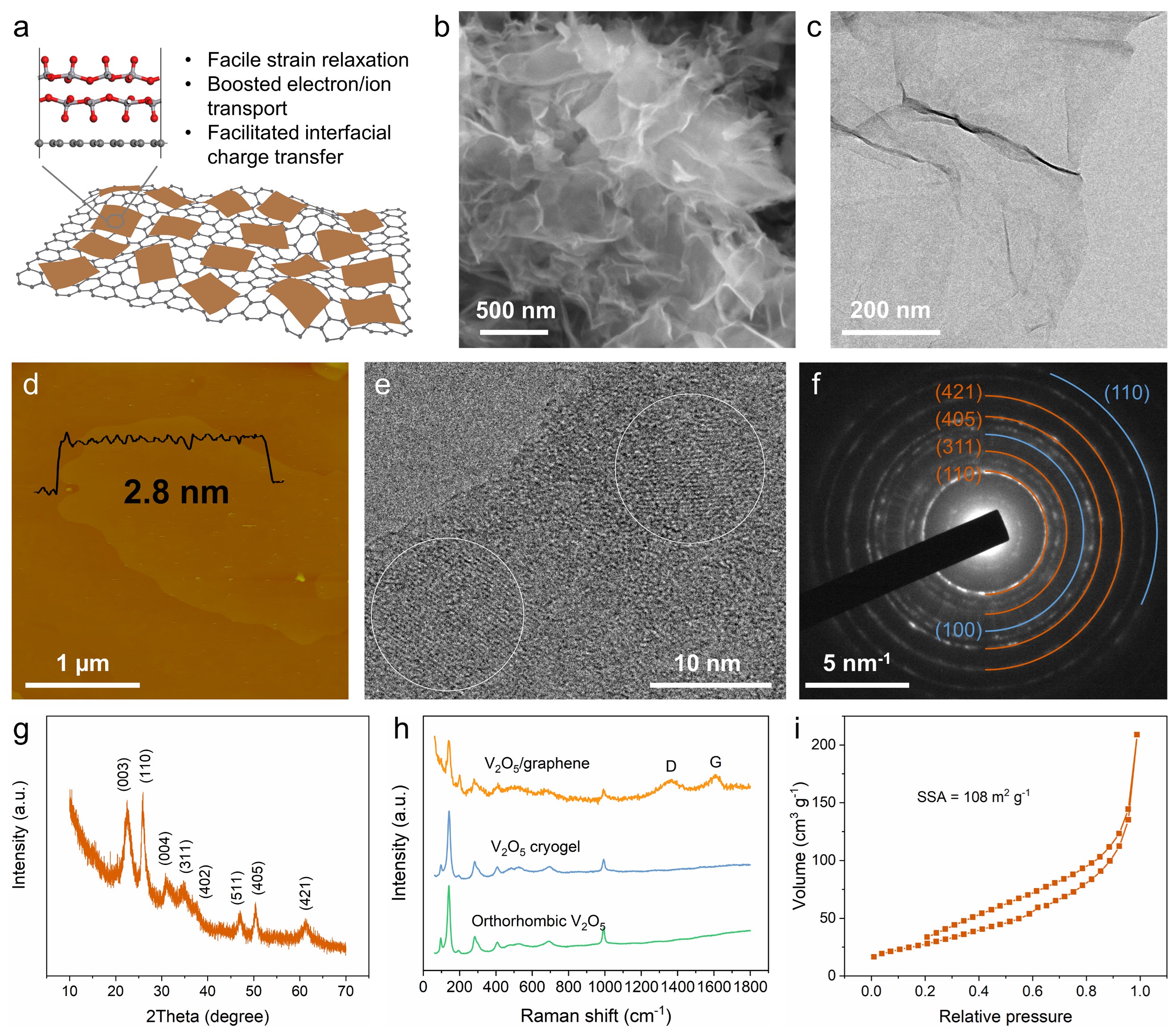F. Su, F.F. Xing, X. Wang, F.Y. Liu, L.Z. Zhang and Z.-S. Wu*
Energy & Environmental Science, 2023, 16, 222-230.
DOI: 10.1039/D2EE02888C [PDF]

Charge storage reactions with multi-electron transfer represent an effective approach to obtaining higher energy density. V2O5 is a potential multi-electron reaction material, but suffers from the irreversible phase transformation and sluggish kinetics upon deep discharge. Herein, we report a rational strategy of constructing a two-dimensional heterostructure of V2O5 and graphene to realize reversible and fast multi-electron reaction. The ultrathin hybrid structure with abundant heterointerfaces affords the reversible structure transition of V2O5and facilitates ion/electron transport and interfacial charge transfer, thus enabling high-rate multi-electron transfer lithium storage with significant pseudocapacitive contribution. The heterostructure delivers a high capacity of 361 mAh g-1at 1 C and retains 175 mAh g-1at an ultrahigh rate of 100 C, outperforming most intercalation metal oxides. Furthermore, through decoupling such a multi-electron reaction with high capacity and wide potential window, a symmetric full cell with the prelithiated V2O5/graphene serving as both the anode and the cathode is constructed, showing superb energy/power performance and cyclability up to 15000 cycles. This work suggests that creating heterostructure is a reliable strategy for achieving high-rate multi-electron reaction in redox-active electrode materials.